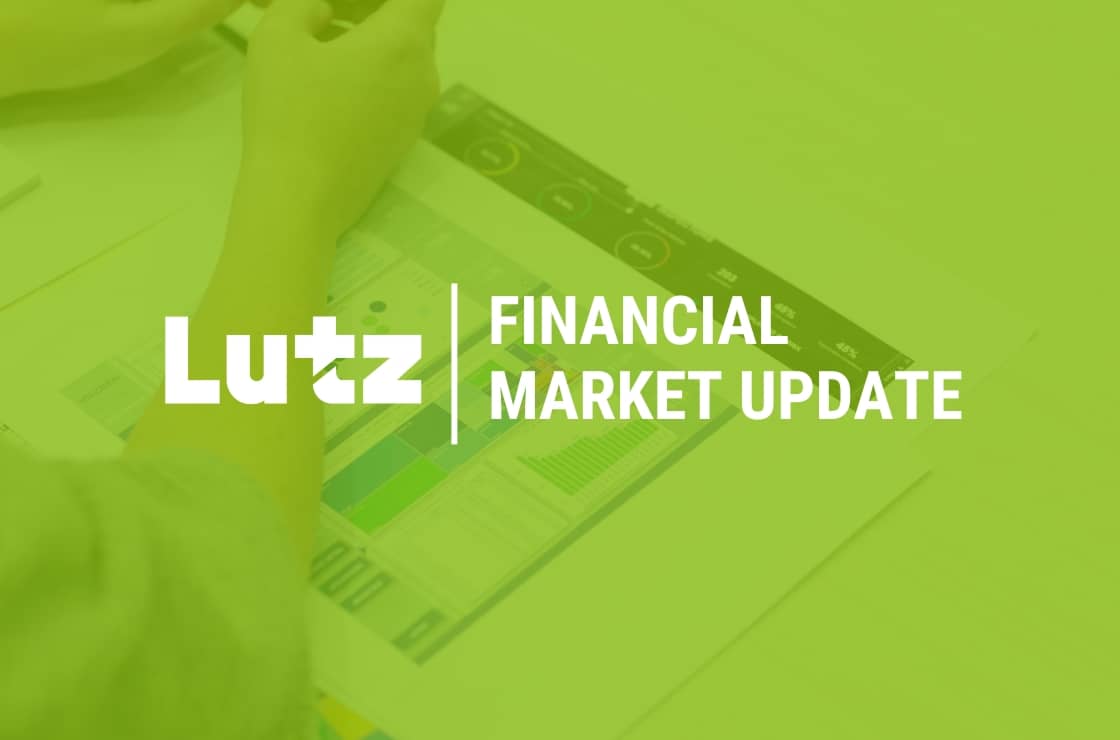Tariff Volatility + 4.7.25

Last week, the President hit virtually the whole world with reciprocal tariffs that were far more than most expected. This caused some countries like China to immediately retaliate, but probably more worrisome is that it took the world’s equity markets down more in two days than had been seen in only four prior times since 1950.
These drops always cause concern, and generally, it's for good reason. COVID, Financial Crisis, and, in this case, the threat of tariffs. During COVID, we not only had a shutdown of the economy, but an uncertain virus that was more scary at the time than the market reaction. Those months were filled with uncertainty, but we worked through them faster than anyone could have expected. While the Financial Crisis beginning in 2008 took longer to work out, it eventually did, even when many days we were concerned with what banks would fail next. I remember trading bonds on the morning of the 9/11 attacks, and the markets closed for four consecutive days. Had they been open, I can’t imagine what would have happened. Ultimately, we moved forward, the markets recovered, our world changed, and we all adjusted.
This brings us to the tariff crisis. What have we learned from the past? All of these events eventually will be reconciled with time. If you look at the chart below, you will notice that in the previous large declines, one year later, the S&P 500 was marketably higher. Five-year returns are even more so. While this is by no means guaranteed, things happen, companies innovate, and market cycles move on.

Source: S&P 500 Index data from Morningstar Direct. Returns are cumulative and do not include dividends.
However, this time, this seems somewhat man-made and can seemingly be undone with the snap of a finger. Many countries such as Israel, Cambodia, India, and Vietnam are already offering to structure a trade deal to avoid further tariffs. These will all take time to negotiate, so we hope for a delay or off-ramp that the President can get behind. While the endgame is not in sight at the moment, it’s hard to believe the President will risk his legacy and mid-term elections by stifling market growth by stoking uncertainty.
Having a non-emotional reaction to this is probably the best strategy. Planning ahead and making sure we maintain some liquidity allows for the time to let the markets work things out. You own companies that innovate every day and will adjust to the new scenario and may even benefit over time. Some won’t, but that is why diversification is key.
We shouldn’t fall into emotional decisions to panic and do something. Selling is easy, but it’s getting back in that will be the hard part. By the time the coast is clear, the markets typically have already left the station.
Week in Review
- A report published last week showed the U.S. labor market remained on strong footing through March. The economy added 228,000 new jobs, which was more than expected, though the unemployment rate ticked up slightly to 4.2%.
- Treasury yields have declined amidst the substantial volatility in the stock market. The 10-Year dipped below 4% for the first time since last October. As of this writing, fed fund futures are now pricing in 4 rate cuts in 2025.
- Be on the lookout Thursday, April 10th, for an update on inflation, as the Bureau of Labor Statistics prepares to publish the Consumer Price Index. The market is expecting a decline from 2.8% to 2.5% for headline CPI. For Core CPI, which excludes the volatile food and energy categories, the market is expecting a decline from 3.1% to 3.0%.
Hot Reads
Markets
- U.S. Payrolls Rose By 228,000 in March, But Unemployment Rate Increases to 4.2% (CNBC)
- Oaktree’s Howard Marks on the Trump Administration’s Tariff Policy – Bloomberg (YouTube)
- China to Impose 34% Retaliatory Tariff On All Goods Imported from the U.S. (CNBC)
Investing
- The Economic Playbook Has Been Shredded. Here Are Your Next Investing Moves (Jason Zweig)
- How Bad Could This Get (Ben Carlson)
- Q1’s Biggest Lesson for Investors: Diversification Works (Morningstar)
Other
- Tune Out the Noise – DFA Documentary (YouTube)
- How the World’s Largest Underwater Tunnel is Being Built – BBC News (YouTube)
- Inside Dachau: Hollywood’s Darkest Footage – Uncensored (YouTube)
Markets at a Glance



Source: Morningstar Direct.

Source: Morningstar Direct.

Source: Treasury.gov

Source: Treasury.gov

Source: FRED Database & ICE Benchmark Administration Limited (IBA)

Source: FRED Database & ICE Benchmark Administration Limited (IBA)
Economic Calendar

- Analytical, Strategic, Consistency, Includer, Input
Justin Vossen, CFP®
Justin Vossen, Investment Advisor and Principal, began his career in 1997. With extensive experience in finance, banking, and investment management, he brings comprehensive expertise to his role advising high-net-worth clients and foundations. As a member of the Lutz Financial Board his leadership extends beyond client relationships to shaping the firm's direction.
Leveraging his background in bond trading and portfolio management, Justin focuses on providing comprehensive investment and planning services. He develops tailored financial strategies across wealth management, retirement planning, and estate planning. Justin values creating solutions that give clients peace of mind about their financial situations.
At Lutz, Justin establishes unshakeable trust through his analytical mindset and strategic approach to investment management. He takes time to understand what truly matters to each client—whether it's retiring early or successfully transferring a business—and then builds comprehensive financial strategies to help them get there.
Justin lives in Omaha, NE. Outside the office, he can be found spending time with his wife, Nicole, and their children, Max and Kate.
Recent News & Insights
Financial Planning Advice for Recent College Grads
2024’s Hot Stocks Have Cooled Fast + 4.23.25
Do You Need a Family Office? 7 Aspects to Consider
Tariff Volatility + 4.7.25



.jpg?width=300&height=175&name=Mega%20Menu%20Image%20(1).jpg)
%20(1).jpg?width=300&height=175&name=Mega%20Menu%20Image%20(2)%20(1).jpg)
%20(1)-Mar-08-2024-09-27-14-7268-PM.jpg?width=300&height=175&name=Untitled%20design%20(6)%20(1)-Mar-08-2024-09-27-14-7268-PM.jpg)

%20(1)-Mar-08-2024-09-11-30-0067-PM.jpg?width=300&height=175&name=Untitled%20design%20(3)%20(1)-Mar-08-2024-09-11-30-0067-PM.jpg)
%20(1).jpg?width=300&height=175&name=Mega%20Menu%20Image%20(3)%20(1).jpg)
%20(1).jpg?width=300&height=175&name=Mega%20Menu%20Image%20(4)%20(1).jpg)
%20(1).jpg?width=300&height=175&name=Mega%20Menu%20Image%20(5)%20(1).jpg)
-Mar-08-2024-08-50-35-9527-PM.png?width=300&height=175&name=Untitled%20design%20(1)-Mar-08-2024-08-50-35-9527-PM.png)


.jpg)







